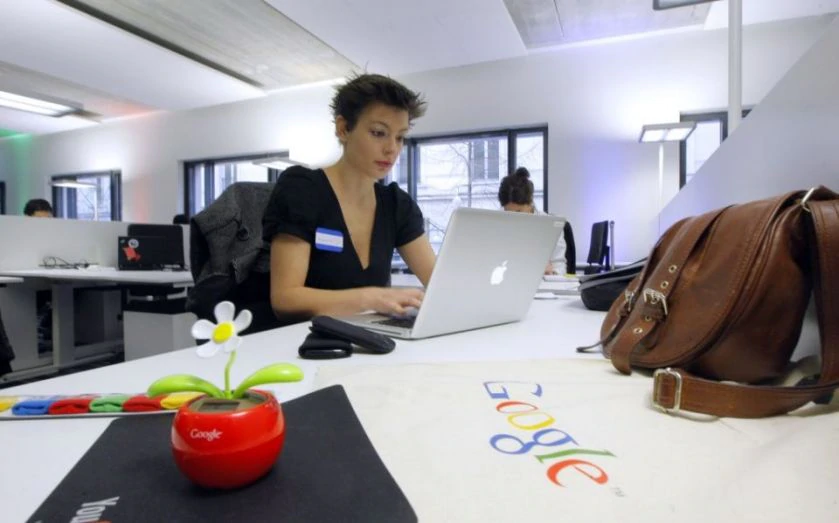Everyone has felt the wrath of Covid-19. The pandemic blindsided businesses earlier this year and has forced organisations to rapidly step into the unknown. But what have we learnt? And can we apply these learnings to tackle existing issues in technology, like diversity and inclusion?
Research from McKinsey Global Institute estimates that women make up almost two fifths of the global labour force and they have suffered more than half of total job losses from the current crisis. As companies reset their strategies, diversity and inclusion must be a focus to both build stronger workforces and close the UK skills gap.
Building a diverse and inclusive workplace goes beyond hiring. It’s about weeding out ingrained bias, empowering everyone to have a confident, influential voice and upskilling teams. Unsurprisingly, this was a key topic at our recent Code Fest event, which brought together women leaders in technology, from businesses including Microsoft, Bank of America, Twitter, LinkedIn and more to discuss the role tackling inequality plays in creating future-ready businesses.
Drawing on insights from these sessions, here’s how businesses can help close the gap for women in tech and rebuild a workplace that supports women to thrive.
Eliminating bias and building an inclusive workplace
On our Defining Diversity & Inclusion panel, Ariana Ocampo, UX designer at Softwire, highlighted that it doesn’t matter if people are in the room, when their voices aren’t being heard.
Action matters. It’s not enough for companies to say they want to be inclusive. They must provide forums for all employees to have a voice, as well as implement formalised — and equal — procedures for feeding back.
Too often, businesses rely on views from senior executives that don’t reflect the entire organisation or expect to “solve” diversity and inclusion with one policy change. As women only represent 18.6 per cent of senior leadership roles, according to Catalyst, a top-down approach isn’t the answer, and could even further entrench existing bias.
Instead, businesses must treat diversity and inclusion as an ongoing learning process. And learning means listening and thinking.
Business leaders need to consciously think about the tasks they are giving employees, whether there are discrepancies in how they are managed, the diversity within teams, and whether all individuals have an opportunity to be heard.
Tackling imposter syndrome and empowering women
It’s suggested that 90 per cent of women in the UK experience imposter syndrome — feeling inadequate or incompetent — at work. This is a harsh reality that needs to be addressed to retain female staff, as well as ensure women have the confidence to build careers and skills.
Self-doubt and imposter syndrome can permeate workplaces. Women, especially women of colour, are likely to experience it. If we don’t see many examples of people who look like us, or share our background, we are more likely to experience imposter syndrome.
Meanwhile, working mothers are more likely during the pandemic to have lost working hours than men due to having to pick up additional care duties. This exacerbates an issue, particularly prevalent in STEM, in which women are almost twice as likely to leave career paths all together after having children.
In a Zoom world, where employees have fewer touchpoints, employers need to take greater effort to tackle imposter syndrome, empower women and ensure their roles and ability to focus on them are protected.
Microsoft’s UK early careers recruiter Kema Davies spoke about the value of being confident and authentic in the workplace in a remote world. Employers can help empower their employees to have a voice through clear agendas, ownership and talking points to ensure everyone’s input is valued.
Simultaneously, implementing mentorship programmes that can offer support and provide professional guidance, can assist in maturing skills and instilling confidence. Offering flexible work patterns around other commitments can also help finally put to bed the harmful myth that women must choose between motherhood and a career.
Bridging the tech skills gap, the need to upskill teams
Demand for technology skills continues to surge, and women continue to remain underrepresented in tech, making up a mere 17 per cent of roles. The needle has hardly moved in more than a decade.
Meanwhile, The IMF reports that women will be disproportionately affected by digital transformation, as 11 per cent of women’s jobs are at risk of elimination — a higher percentage than for jobs held by men.
Upskilling women can solve these two urgent issues, creating a workforce that is both highly skilled and diverse. Businesses that offer upskilling also demonstrate their organisation has a culture that invests in them and the future. It lets prospective hires from diverse backgrounds know they’ll be valued and supported.
One example of the benefits of this approach is seen in Allen & Overy. The organisation invested in a technology skills programme for its female lawyers, as it saw a strong appetite for digital upskilling. Employees worked with clients to bring technology solutions to life. Post-programme, they reported higher levels of IT literacy and boosted client satisfaction. Meanwhile, the business saw an increase in employee engagement and productivity. A win-win-win solution for the employee, the employer and the diversity mission.
As businesses plan to build back better, they have a chance to rethink. This rebuilding is a once in a generation chance to tackle bias, overcome imposter syndrome, and close the digital skills gap. The businesses that get this right and build a diverse and inclusive workplace for women will thrive.
We can’t wait any longer, it’s time to put women at the centre of our future tech industry.
Main image credit: Getty

![[BREAKING] Supreme Court likely to take a call soon on resuming physical hearing](https://newsfortomorrow.com/wp-content/uploads/2021/01/BREAKING-Supreme-Court-likely-to-take-a-call-soon-on-225x125.jpg)














